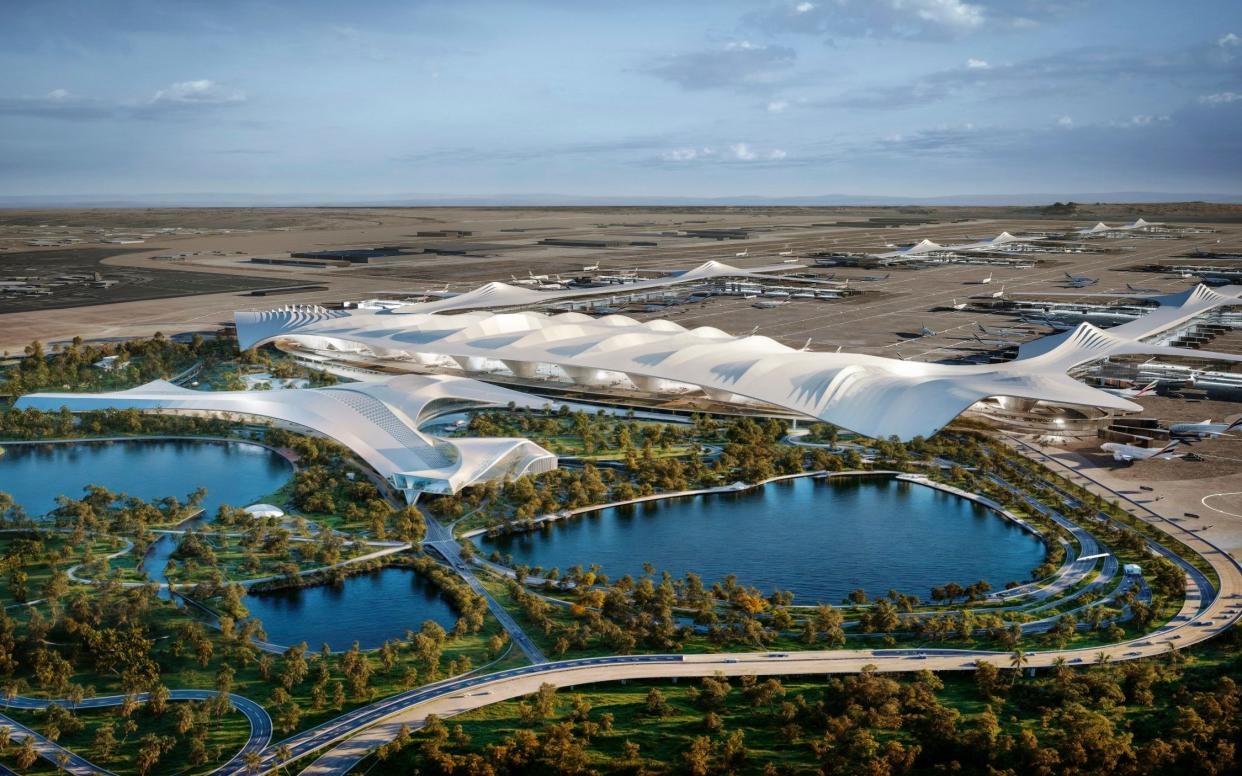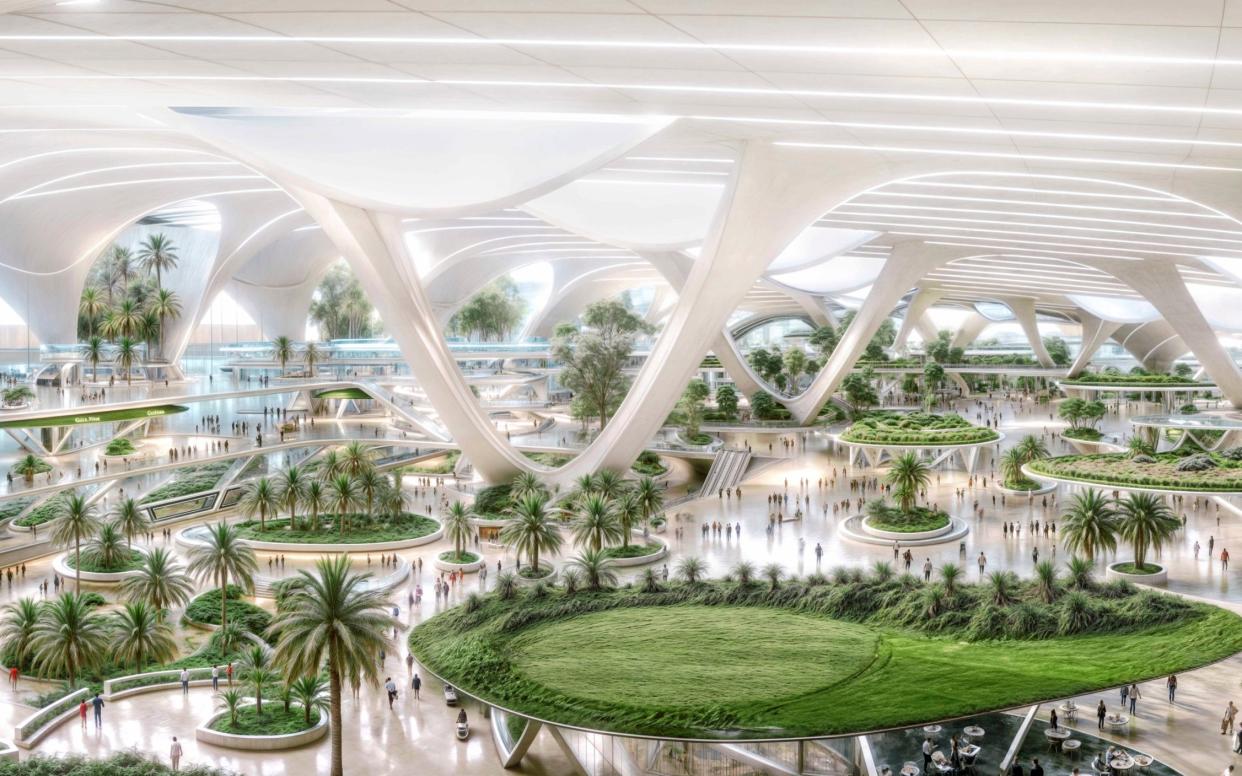A glimpse inside Dubai’s futuristic new airport, set to be the biggest on Earth

Within ten years Dubai’s main airport will move to a new desert mega-hub, projected to be the busiest on the planet.
Located 28 miles south-west of Dubai, Al Maktoum International Airport will have the largest capacity of any on Earth, with the potential to carry up to 260 million passengers per year.
It will replace the existing Dubai International Airport, already the busiest in the world for international traffic, handling 87 million passengers in 2023. Only Atlanta’s Hartsfield-Jackson airport is busier, with 105 million mostly domestic passengers in 2023.

New renderings of Al Maktoum International Airport show a vast passenger terminal, with floating parks, palm trees and a curving white roof. From above, the airport is designed to resemble traditional Bedouin tents, surrounded by desert fields to one side and artificial forested lakes to the other.
Al Maktoum International Airport is already in service, and is sometimes called Dubai World Central Airport. It opened in June 2010, primarily for cargo flights, but has welcomed passenger aircraft since 2011.
By 2016, it served 410,000 passengers per year, although some critics described the airport as a “white elephant” due to the delays in plans for its dramatic expansion, exacerbated by the lingering impact of the 2009 economic crisis and then the Covid pandemic.
The expansion of Al Maktoum will cost AED 128 billion (£28 billion) and all existing operations from Dubai International Airport, including Emirates and FlyDubai flights, will transfer to Al Maktoum by 2034.
The announcement comes just weeks after Dubai suffered the worst rainfall in its history. Sections of the airport were flooded and the transport hub temporarily closed to passengers, with services impacted for days after the rain stopped.
The new Al Maktoum International Airport will have 400 gates, five terminals and five parallel runways (the existing Dubai International Airport has two runways and three terminals). The newly expanded airport will cover 70 square kilometres, five times the area of the existing international hub.
In a social media post, Sheikh Mohammed bin Rashid Al Maktoum, the ruler of Dubai, said: “New aviation technologies will be employed for the first time in the aviation sector.”
The development of Al Maktoum International Airport will be part of a wider project to construct a new city in the suburbs of Dubai. Sheikh Mohammed added: “As we build an entire city around the airport in Dubai South, demand for housing for a million people will follow. It will host the world’s leading companies in the logistics and air transport sectors.”

Dubai International Airport is currently connected to 262 destinations across 104 countries, with 102 international airlines serving it. However, given that it is located close to the city centre and is surrounded by residential areas and two major motorways, the airport is restricted in how far it can expand.
Al Maktoum International Airport is based in an undeveloped desert area miles from the urban centre, meaning it is able to fulfil rising demand for international air traffic through the Emirate state in future decades.
Along with the airport, city planners have suggested that a golf resort, exhibition centres, hotels, logistics hubs and residential areas could follow in the surrounding area.
“We are building a new project for future generations, ensuring continuous and stable development for our children and their children in turn,” added Sheikh Mohammed. “Dubai will be the world’s airport, its port, its urban hub and its new global centre.”


